Bài giảng Mạng máy tính 1 - Chapter 1: Course details - Phạm Trần Vũ
Course details
Number of credits: 4
Study time allocation per week:
3 lecture hours for theory
2 lecture hours for exercises and lab work
8 hours for self-study
Website:
Course outline (1)
Fundamental concepts in the design and
implementation of computer networks
Protocols, standards and applications
Introduction to network programming.
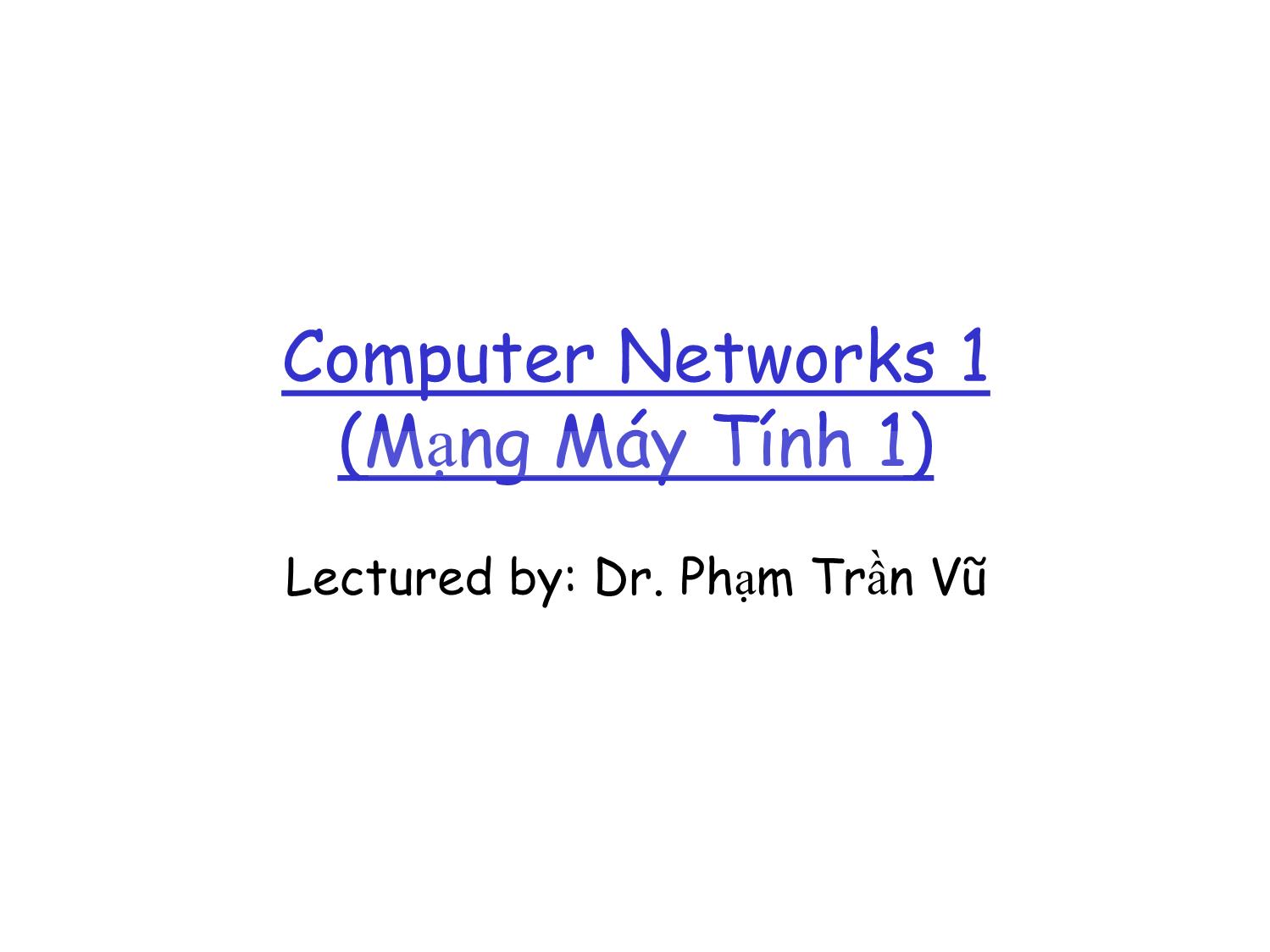
Trang 1
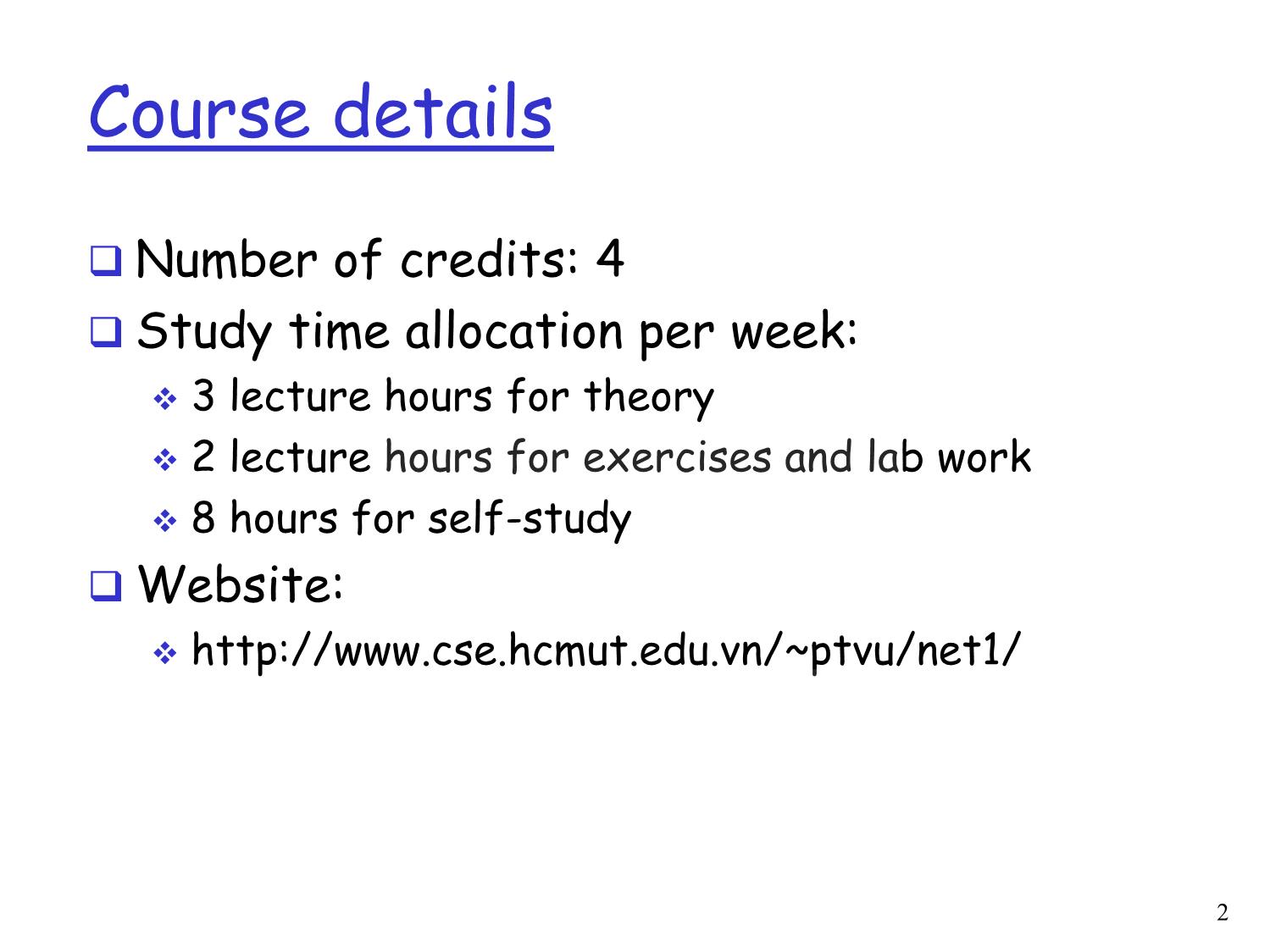
Trang 2

Trang 3
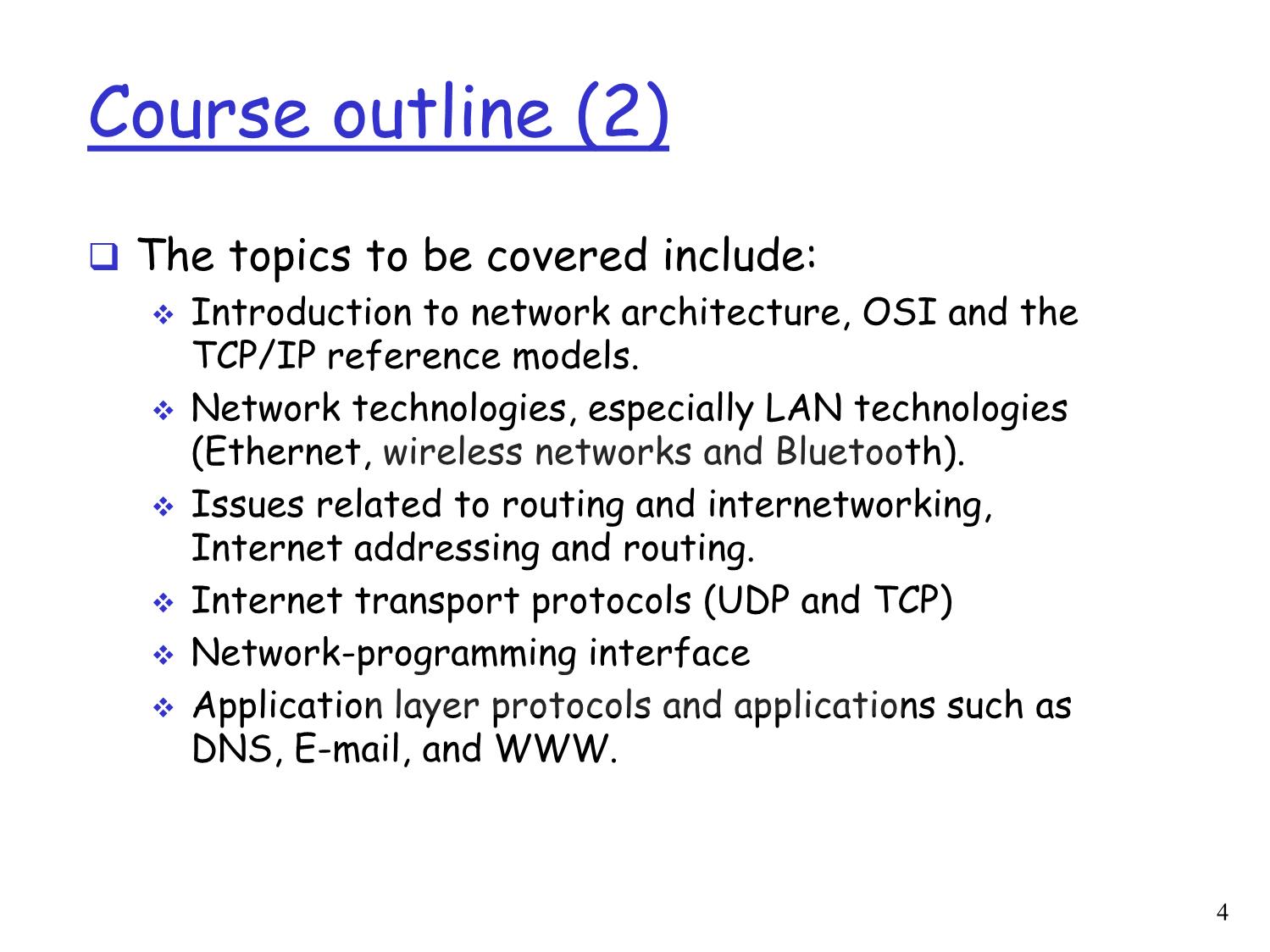
Trang 4
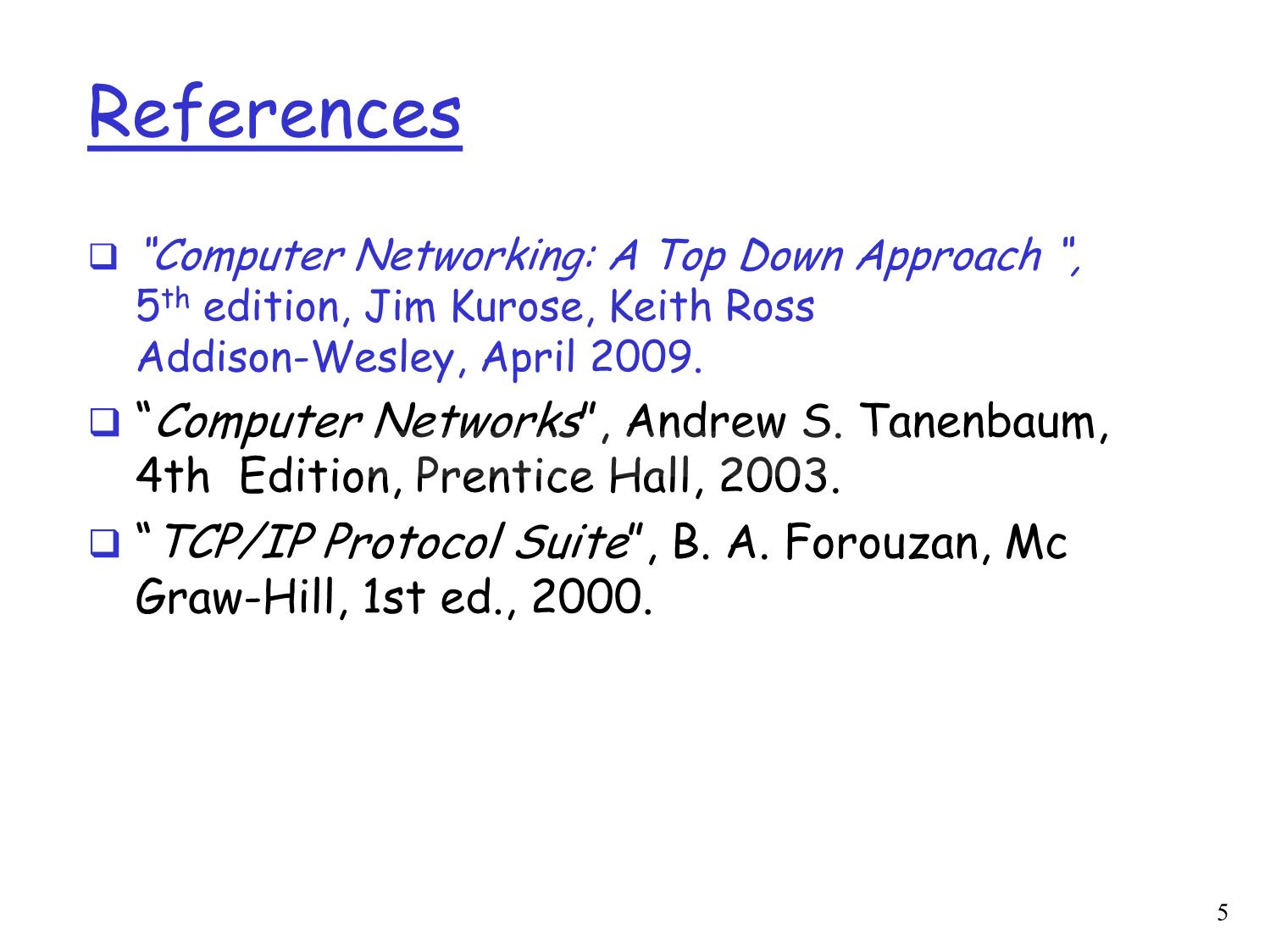
Trang 5
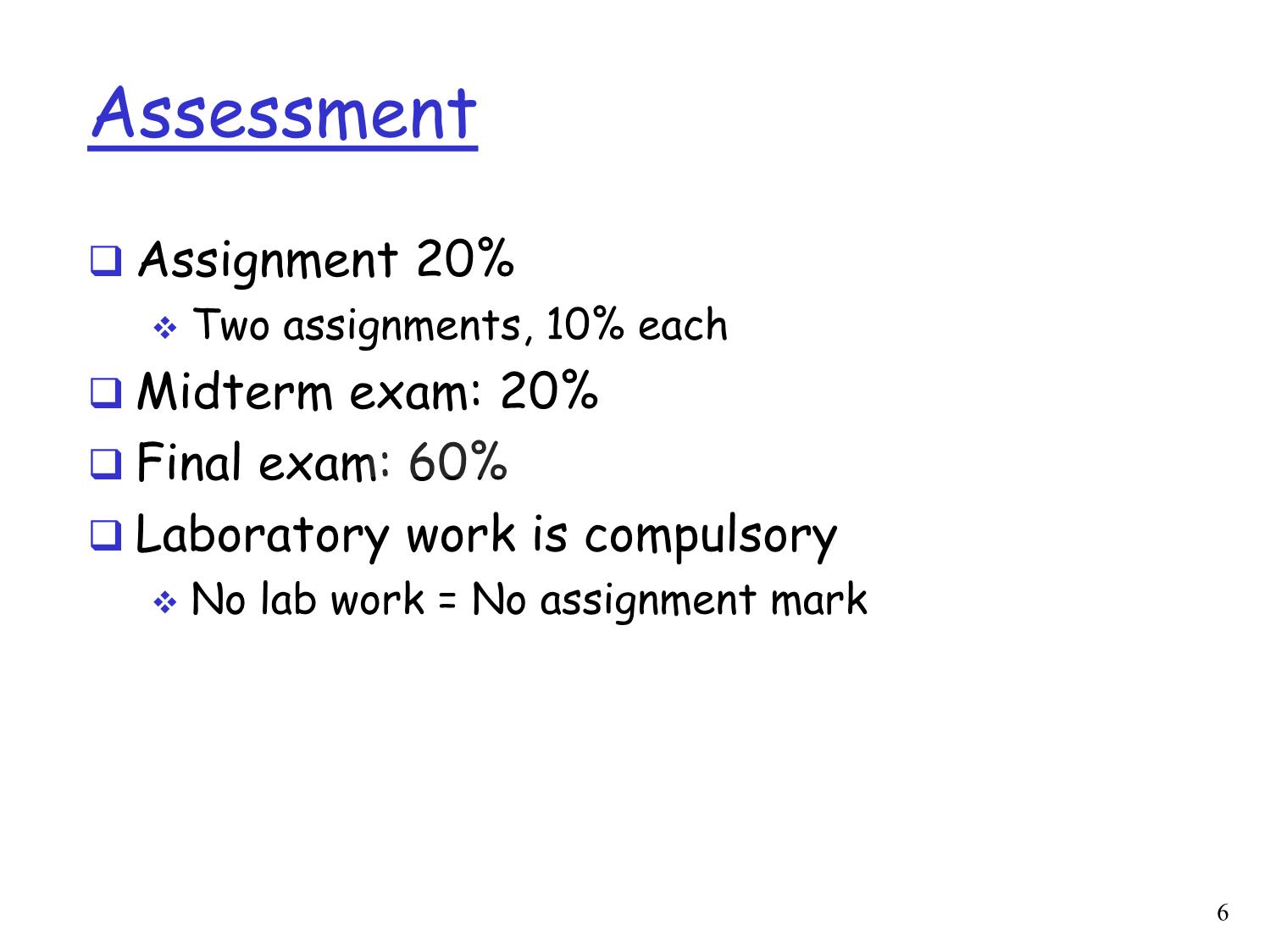
Trang 6
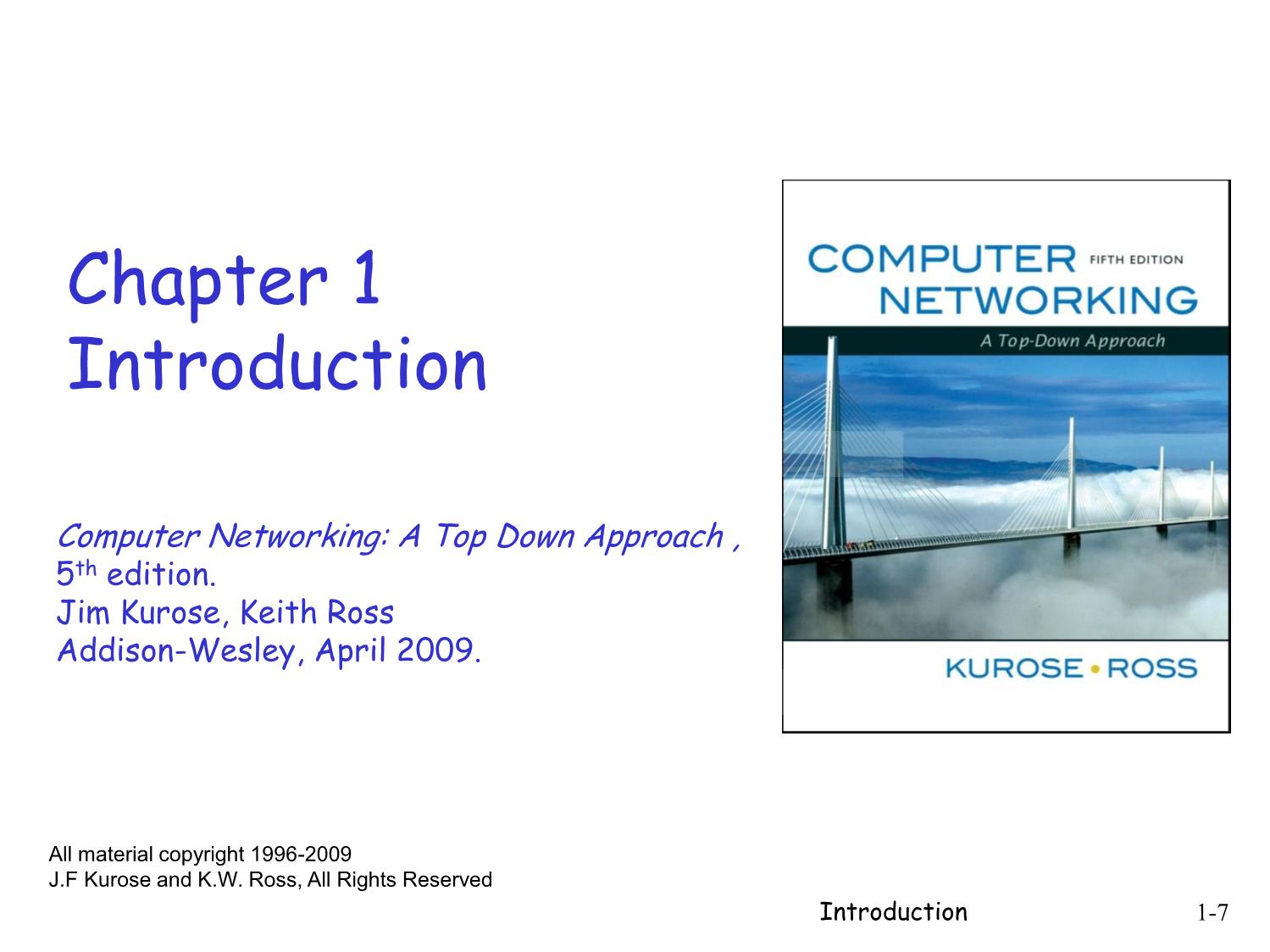
Trang 7
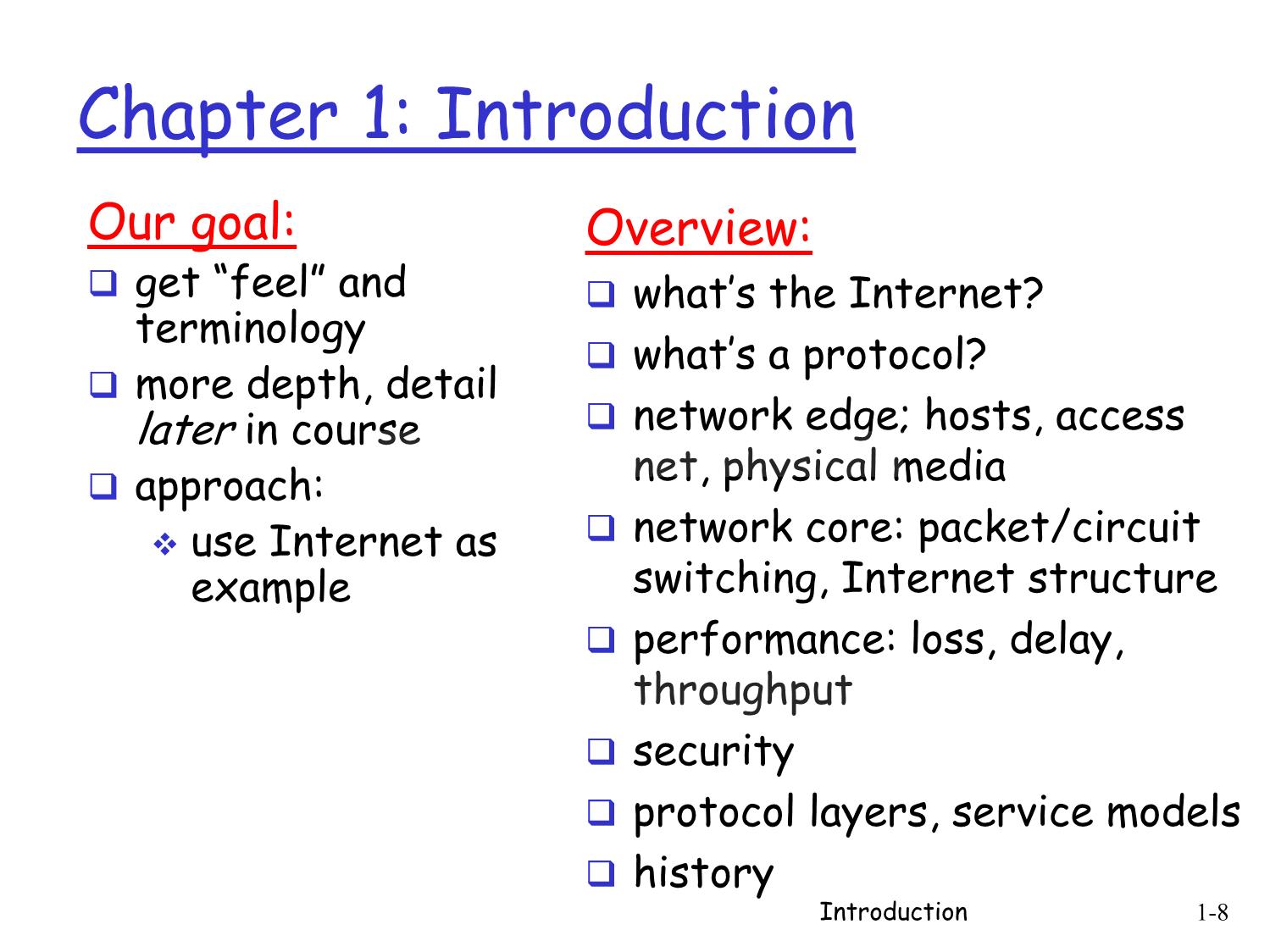
Trang 8
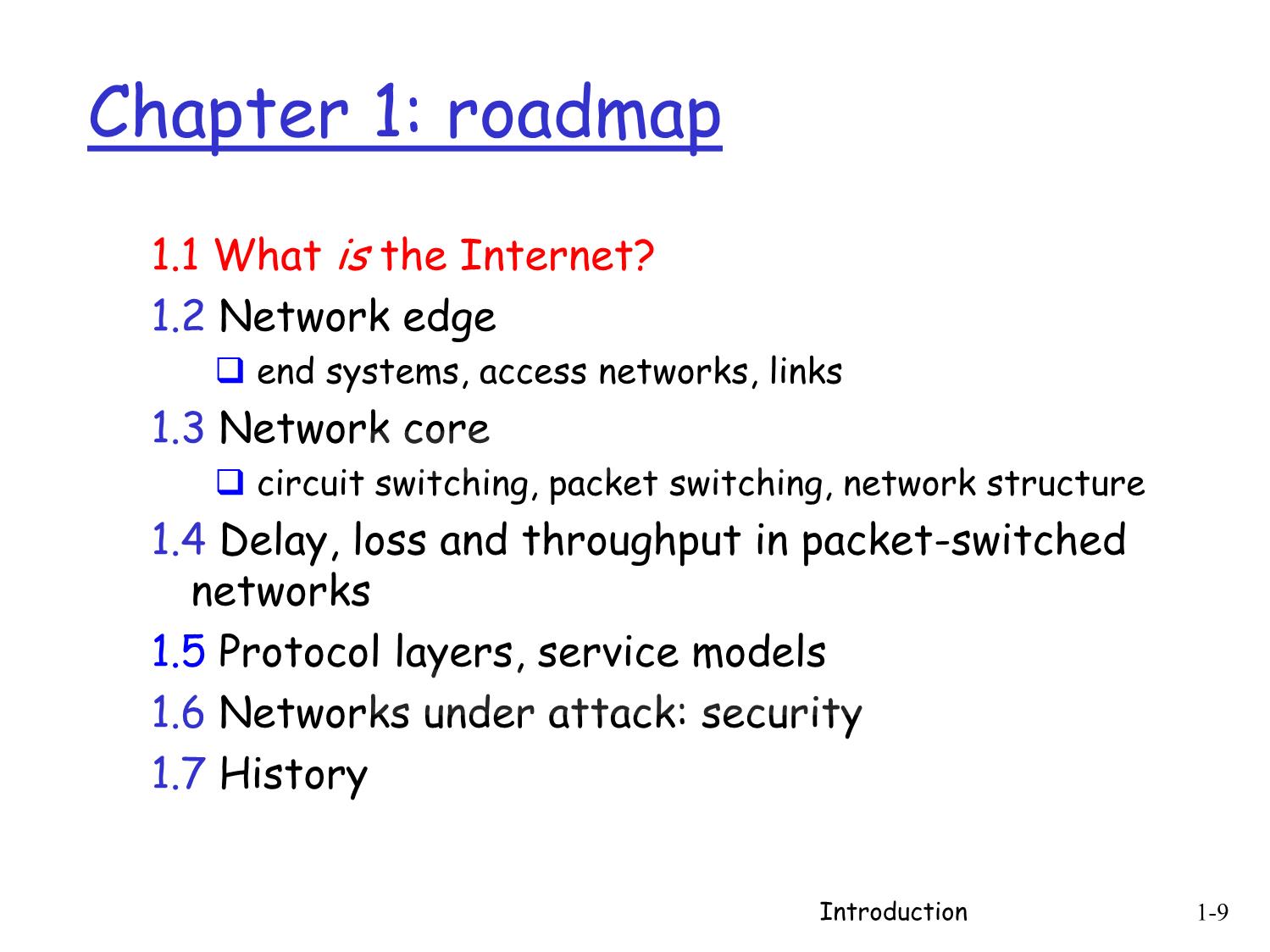
Trang 9
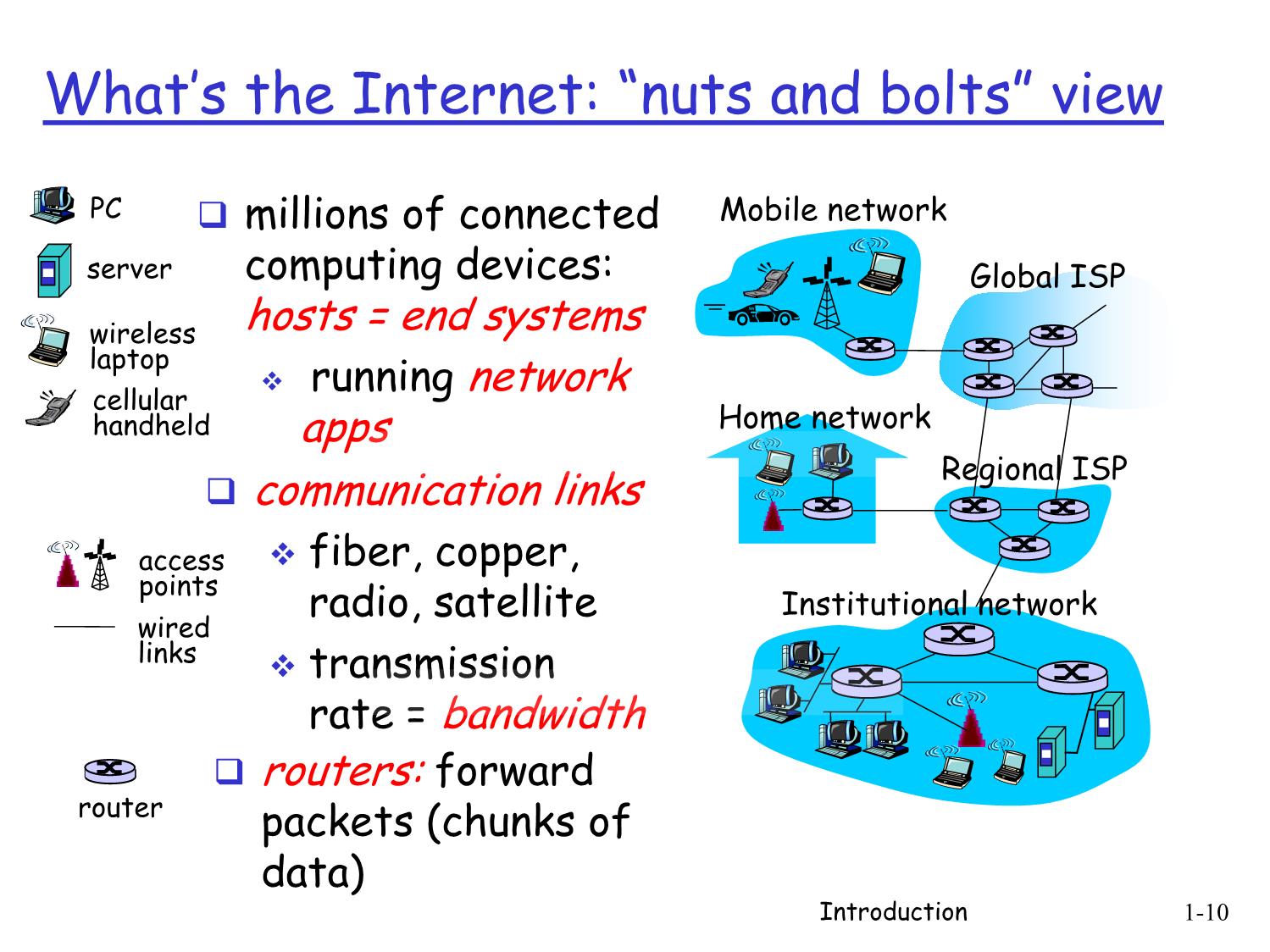
Trang 10
Tải về để xem bản đầy đủ
Bạn đang xem 10 trang mẫu của tài liệu "Bài giảng Mạng máy tính 1 - Chapter 1: Course details - Phạm Trần Vũ", để tải tài liệu gốc về máy hãy click vào nút Download ở trên
Tóm tắt nội dung tài liệu: Bài giảng Mạng máy tính 1 - Chapter 1: Course details - Phạm Trần Vũ
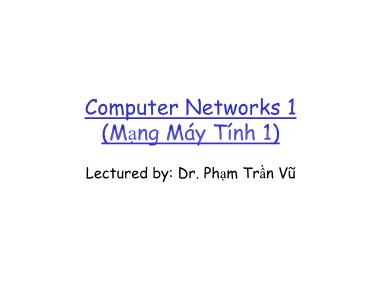
ck: security 1.7 History Introduction 1-52 How do loss and delay occur? packets queue in router buffers packet arrival rate to link exceeds output link capacity packets queue, wait for turn A B packet being transmitted (delay) packets queueing (delay) free (available) buffers: arriving packets dropped (loss) if no free buffers Introduction 1-53 Four sources of packet delay 1. nodal processing: check bit errors determine output link A B propagation transmission nodal processing queueing 2. queueing time waiting at output link for transmission depends on congestion level of router Introduction 1-54 Delay in packet-switched networks 3. Transmission delay: R=link bandwidth (bps) L=packet length (bits) time to send bits into link = L/R 4. Propagation delay: d = length of physical link s = propagation speed in medium (~2x108 m/sec) propagation delay = d/s A B propagation transmission nodal processing queueing Note: s and R are very different quantities! Introduction 1-55 Caravan analogy cars “propagate” at 100 km/hr toll booth takes 12 sec to service car (transmission time) car~bit; caravan ~ packet Q: How long until caravan is lined up before 2nd toll booth? Time to “push” entire caravan through toll booth onto highway = 12*10 = 120 sec Time for last car to propagate from 1st to 2nd toll both: 100km/(100km/hr)= 1 hr A: 62 minutes toll booth toll booth ten-car caravan 100 km 100 km Introduction 1-56 Caravan analogy (more) Cars now “propagate” at 1000 km/hr Toll booth now takes 1 min to service a car Q: Will cars arrive to 2nd booth before all cars serviced at 1st booth? Yes! After 7 min, 1st car at 2nd booth and 3 cars still at 1st booth. 1st bit of packet can arrive at 2nd router before packet is fully transmitted at 1st router! See Ethernet applet at AWL Web site toll booth toll booth ten-car caravan 100 km 100 km Introduction 1-57 Nodal delay dproc = processing delay typically a few microsecs or less dqueue = queuing delay depends on congestion dtrans = transmission delay = L/R, significant for low-speed links dprop = propagation delay a few microsecs to hundreds of msecs proptransqueueprocnodal ddddd Introduction 1-58 Queueing delay (revisited) R=link bandwidth (bps) L=packet length (bits) a=average packet arrival rate traffic intensity = La/R La/R ~ 0: average queueing delay small La/R -> 1: delays become large La/R > 1: more “work” arriving than can be serviced, average delay infinite! Introduction 1-59 “Real” Internet delays and routes What do “real” Internet delay & loss look like? Traceroute program: provides delay measurement from source to router along end-end Internet path towards destination. For all i: sends three packets that will reach router i on path towards destination router i will return packets to sender sender times interval between transmission and reply. 3 probes 3 probes 3 probes Introduction 1-60 “Real” Internet delays and routes 1 cs-gw (128.119.240.254) 1 ms 1 ms 2 ms 2 border1-rt-fa5-1-0.gw.umass.edu (128.119.3.145) 1 ms 1 ms 2 ms 3 cht-vbns.gw.umass.edu (128.119.3.130) 6 ms 5 ms 5 ms 4 jn1-at1-0-0-19.wor.vbns.net (204.147.132.129) 16 ms 11 ms 13 ms 5 jn1-so7-0-0-0.wae.vbns.net (204.147.136.136) 21 ms 18 ms 18 ms 6 abilene-vbns.abilene.ucaid.edu (198.32.11.9) 22 ms 18 ms 22 ms 7 nycm-wash.abilene.ucaid.edu (198.32.8.46) 22 ms 22 ms 22 ms 8 62.40.103.253 (62.40.103.253) 104 ms 109 ms 106 ms 9 de2-1.de1.de.geant.net (62.40.96.129) 109 ms 102 ms 104 ms 10 de.fr1.fr.geant.net (62.40.96.50) 113 ms 121 ms 114 ms 11 renater-gw.fr1.fr.geant.net (62.40.103.54) 112 ms 114 ms 112 ms 12 nio-n2.cssi.renater.fr (193.51.206.13) 111 ms 114 ms 116 ms 13 nice.cssi.renater.fr (195.220.98.102) 123 ms 125 ms 124 ms 14 r3t2-nice.cssi.renater.fr (195.220.98.110) 126 ms 126 ms 124 ms 15 eurecom-valbonne.r3t2.ft.net (193.48.50.54) 135 ms 128 ms 133 ms 16 194.214.211.25 (194.214.211.25) 126 ms 128 ms 126 ms 17 * * * 18 * * * 19 fantasia.eurecom.fr (193.55.113.142) 132 ms 128 ms 136 ms traceroute: gaia.cs.umass.edu to www.eurecom.fr Three delay measurements from gaia.cs.umass.edu to cs-gw.cs.umass.edu * means no response (probe lost, router not replying) trans-oceanic link Introduction 1-61 Packet loss queue (aka buffer) preceding link in buffer has finite capacity packet arriving to full queue dropped (aka lost) lost packet may be retransmitted by previous node, by source end system, or not at all A B packet being transmitted packet arriving to full buffer is lost buffer (waiting area) Introduction 1-62 Throughput throughput: rate (bits/time unit) at which bits transferred between sender/receiver instantaneous: rate at given point in time average: rate over longer period of time server, with file of F bits to send to client link capacity Rs bits/sec link capacity Rc bits/sec pipe that can carry fluid at rate Rs bits/sec) pipe that can carry fluid at rate Rc bits/sec) server s nds bits (fluid) into pipe Introduction 1-63 Throughput (more) Rs < Rc What is average end-end throughput? Rs bits/sec Rc bits/sec Rs > Rc What is average end-end throughput? Rs bits/sec Rc bits/sec link on end-end path that constrains end-end throughput bottleneck link Introduction 1-64 Throughput: Internet scenario 10 connections (fairly) share backbone bottleneck link R bits/sec Rs Rs Rs Rc Rc Rc R per-connection end-end throughput: min(Rc,Rs,R/10) in practice: Rc or Rs is often bottleneck Introduction 1-65 Chapter 1: roadmap 1.1 What is the Internet? 1.2 Network edge end systems, access networks, links 1.3 Network core circuit switching, packet switching, network structure 1.4 Delay, loss and throughput in packet-switched networks 1.5 Protocol layers, service models 1.6 Networks under attack: security 1.7 History Introduction 1-66 Protocol “Layers” Networks are complex! many “pieces”: hosts routers links of various media applications protocols hardware, software Question: Is there any hope of organizing structure of network? Or at least our discussion of networks? Introduction 1-67 Organization of air travel a series of steps ticket (purchase) baggage (check) gates (load) runway takeoff airplane routing ticket (complain) baggage (claim) gates (unload) runway landing airplane routing airplane routing Introduction 1-68 ticket (purchase) baggage (check) gates (load) runway (takeoff) airplane routing departure airport arrival airport intermediate air-traffic control centers airplane routing airplane routing ticket (complain) baggage (claim gates (unload) runway (land) airplane routing ticket baggage gate takeoff/landing airplane routing Layering of airline functionality Layers: each layer implements a service via its own internal-layer actions relying on services provided by layer below Introduction 1-69 Why layering? Dealing with complex systems: explicit structure allows identification, relationship of complex system’s pieces layered reference model for discussion modularization eases maintenance, updating of system change of implementation of layer’s service transparent to rest of system e.g., change in gate procedure doesn’t affect rest of system layering considered harmful? Introduction 1-70 Internet protocol stack application: supporting network applications FTP, SMTP, HTTP transport: process-process data transfer TCP, UDP network: routing of datagrams from source to destination IP, routing protocols link: data transfer between neighboring network elements PPP, Ethernet physical: bits “on the wire” application transport network link physical Introduction 1-71 ISO/OSI reference model presentation: allow applications to interpret meaning of data, e.g., encryption, compression, machine- specific conventions session: synchronization, checkpointing, recovery of data exchange Internet stack “missing” these layers! these services, if needed, must be implemented in application needed? application presentation session transport network link physical Introduction 1-72 source application transport network link physical HtHn M segment Ht datagram destination application transport network link physical HtHnHl M HtHn M Ht M M network link physical link physical HtHnHl M HtHn M HtHn M HtHnHl M router switch Encapsulation message M M frame Introduction 1-73 Chapter 1: roadmap 1.1 What is the Internet? 1.2 Network edge end systems, access networks, links 1.3 Network core circuit switching, packet switching, network structure 1.4 Delay, loss and throughput in packet-switched networks 1.5 Protocol layers, service models 1.6 Networks under attack: security 1.7 History Introduction 1-74 Network Security The field of network security is about: how bad guys can attack computer networks how we can defend networks against attacks how to design architectures that are immune to attacks Internet not originally designed with (much) security in mind original vision: “a group of mutually trusting users attached to a transparent network” Internet protocol designers playing “catch-up” Security considerations in all layers! Introduction 1-75 Bad guys can put malware into hosts via Internet Malware can get in host from a virus, worm, or trojan horse. Spyware malware can record keystrokes, web sites visited, upload info to collection site. Infected host can be enrolled in a botnet, used for spam and DDoS attacks. Malware is often self-replicating: from an infected host, seeks entry into other hosts Introduction 1-76 Bad guys can put malware into hosts via Internet Trojan horse Hidden part of some otherwise useful software Today often on a Web page (Active-X, plugin) Virus infection by receiving object (e.g., e-mail attachment), actively executing self-replicating: propagate itself to other hosts, users Worm: infection by passively receiving object that gets itself executed self- replicating: propagates to other hosts, users Sapphire Worm: aggregate scans/sec in first 5 minutes of outbreak (CAIDA, UWisc data) Introduction 1-77 Bad guys can attack servers and network infrastructure Denial of service (DoS): attackers make resources (server, bandwidth) unavailable to legitimate traffic by overwhelming resource with bogus traffic 1. select target 2. break into hosts around the network (see botnet) 3. send packets toward target from compromised hosts target Introduction 1-78 The bad guys can sniff packets Packet sniffing: broadcast media (shared Ethernet, wireless) promiscuous network interface reads/records all packets (e.g., including passwords!) passing by A B C src:B dest:A payload Wireshark software used for end-of-chapter labs is a (free) packet-sniffer Introduction 1-79 The bad guys can use false source addresses IP spoofing: send packet with false source address A B C src:B dest:A payload Introduction 1-80 The bad guys can record and playback record-and-playback: sniff sensitive info (e.g., password), and use later password holder is that user from system point of view A B C src:B dest:A user: B; password: foo Introduction 1-81 Network Security more throughout this course chapter 8: focus on security crypographic techniques: obvious uses and not so obvious uses Introduction 1-82 Chapter 1: roadmap 1.1 What is the Internet? 1.2 Network edge end systems, access networks, links 1.3 Network core circuit switching, packet switching, network structure 1.4 Delay, loss and throughput in packet-switched networks 1.5 Protocol layers, service models 1.6 Networks under attack: security 1.7 History Introduction 1-83 Internet History 1961: Kleinrock - queueing theory shows effectiveness of packet- switching 1964: Baran - packet- switching in military nets 1967: ARPAnet conceived by Advanced Research Projects Agency 1969: first ARPAnet node operational 1972: ARPAnet public demonstration NCP (Network Control Protocol) first host-host protocol first e-mail program ARPAnet has 15 nodes 1961-1972: Early packet-switching principles Introduction 1-84 Internet History 1970: ALOHAnet satellite network in Hawaii 1974: Cerf and Kahn - architecture for interconnecting networks 1976: Ethernet at Xerox PARC ate70’s: proprietary architectures: DECnet, SNA, XNA late 70’s: switching fixed length packets (ATM precursor) 1979: ARPAnet has 200 nodes Cerf and Kahn’s internetworking principles: minimalism, autonomy - no internal changes required to interconnect networks best effort service model stateless routers decentralized control define today’s Internet architecture 1972-1980: Internetworking, new and proprietary nets Introduction 1-85 Internet History 1983: deployment of TCP/IP 1982: smtp e-mail protocol defined 1983: DNS defined for name-to-IP- address translation 1985: ftp protocol defined 1988: TCP congestion control new national networks: Csnet, BITnet, NSFnet, Minitel 100,000 hosts connected to confederation of networks 1980-1990: new protocols, a proliferation of networks Introduction 1-86 Internet History Early 1990’s: ARPAnet decommissioned 1991: NSF lifts restrictions on commercial use of NSFnet (decommissioned, 1995) early 1990s: Web hypertext [Bush 1945, Nelson 1960’s] HTML, HTTP: Berners-Lee 1994: Mosaic, later Netscape late 1990’s: commercialization of the Web Late 1990’s – 2000’s: more killer apps: instant messaging, P2P file sharing network security to forefront est. 50 million host, 100 million+ users backbone links running at Gbps 1990, 2000’s: commercialization, the Web, new apps Introduction 1-87 Internet History 2007: ~500 million hosts Voice, Video over IP P2P applications: BitTorrent (file sharing) Skype (VoIP), PPLive (video) more applications: YouTube, gaming wireless, mobility Introduction 1-88 Introduction: Summary Covered a “ton” of material! Internet overview what’s a protocol? network edge, core, access network packet-switching versus circuit-switching Internet structure performance: loss, delay, throughput layering, service models security history You now have: context, overview, “feel” of networking more depth, detail to follow!
File đính kèm:
 bai_giang_mang_may_tinh_1_chapter_1_course_details_pham_tran.pdf
bai_giang_mang_may_tinh_1_chapter_1_course_details_pham_tran.pdf

